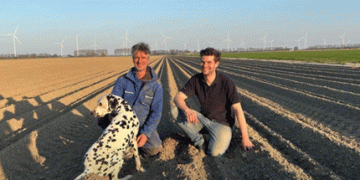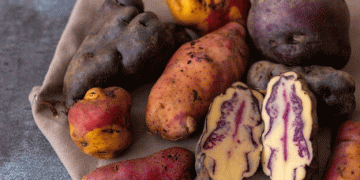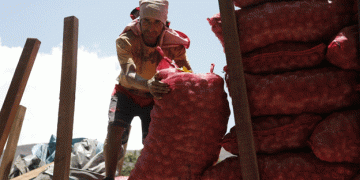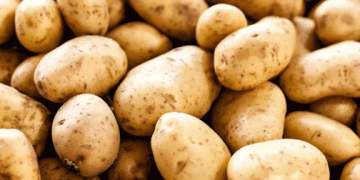As potato prices in Russia surge by over 90% in a year, lawmakers are pushing for temporary price regulations to protect consumers. With inflation driven by poor harvests and market imbalances, the proposal has ignited debate over the role of government in managing essential food prices.
The Potato Price Surge: A Growing Concern for Farmers and Consumers
Potatoes, long considered a staple of the Russian diet, have become one of the most rapidly inflating food items in the country. According to Rosstat and the Central Bank of Russia, the retail price of potatoes nearly doubled in 2024—from 28 rubles/kg in December 2023 to 57 rubles/kg by December 2024, representing a staggering 92% year-on-year increase. And the trend has not stopped: prices continue to climb in early 2025.
The sharp increase began in mid-October 2024, right after the harvest season ended. In just one week, prices rose by over 5% in several regions, with the Volgograd region registering the highest weekly increase at 5.9%. The main culprit: a poor potato harvest. As reported earlier, Russia’s organized agricultural sector harvested 7.3 million tons in 2024, down from 8.6 million tons in 2023—a 15% decline.
Legislative Push for Price Control
In response to escalating prices, Boris Chernyshov, Deputy Speaker of the State Duma, has formally requested that Minister of Economic Development Maksim Reshetnikov consider temporary state price regulation on potatoes. Citing a government resolution that permits price caps for up to 90 days when a product’s price increases by 10% or more for 60 consecutive days, Chernyshov emphasized that the conditions have been met.
His proposal includes conducting a detailed monitoring of potato price dynamics, taking into account seasonal fluctuations, and if confirmed, initiating temporary price limits on this socially significant food.
Market Interventions Already Underway
In an attempt to cool the market, the Russian government introduced a duty-free import quota of 150,000 tons of potatoes from January 1 to July 31, 2025. However, import flows have not yet slowed price growth, especially as early 2025 continues to show weekly increases in retail prices.
According to the Federal Antimonopoly Service (FAS), 30 regions have already signed voluntary agreements to fix retail potato prices, and those regions are seeing better price stabilization compared to areas without such agreements. Yet for the rest of the country, concerns are mounting that market measures alone may not be enough.
Global Context: A Broader Trend?
The situation in Russia reflects a global pattern of price volatility for basic crops due to climate challenges, logistics disruptions, and input cost inflation. For example, global potato prices rose significantly in 2024, with countries like the UK and India also reporting double-digit retail price increases, according to FAO and local agricultural ministries. Poor weather and rising fertilizer costs have affected yields globally, compounding domestic problems.
Russia’s consideration of temporary price regulation for potatoes marks a critical point in balancing free market principles with food security concerns. With prices soaring due to supply shortfalls, import quotas and voluntary price agreements are offering limited relief. Whether government-imposed price caps can stabilize the situation without distorting the market remains to be seen—but the urgency to act is undeniable. As potatoes become a symbol of wider agricultural volatility, strategic planning and long-term investment in production resilience will be vital.






